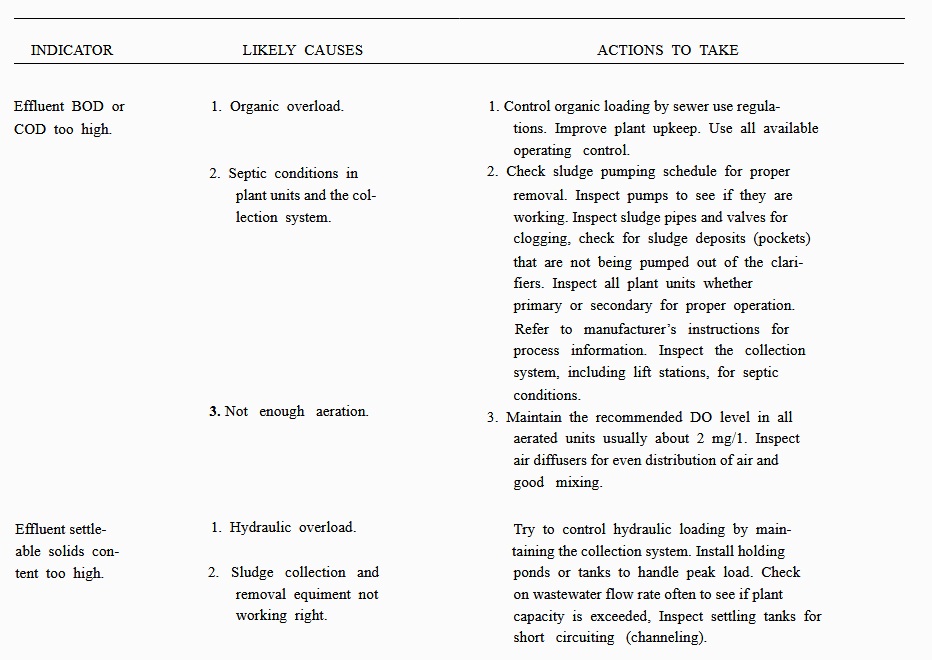Since there is no discharge from the system, there is no need for testing the pond effluent. All bodies of surface water and all wells in the area should be tested often to see if they have been polluted by the pond. Too many suspended solids discharged to the pond will stop up the unit. A suspended solids test must be performed daily (or at least very often) to find out if the treatment plant units are working well or if operative controls need to be changed. The ponds should be checked each day. Any changes in the way the plant looks or smells or any changes from normal operation need to be checked out. Laboratory tests may help find the problem and suggest ways of correcting it.
Troubleshooting
Table 10-13 describes some problems and solutions for these problems with wastewater effluent. Refer to manufacturers’ manuals for more specific troubleshooting and operating guides for various types of treatment plants. Effluent quality usually depends on the operation and maintenance of upstream process units.
Odors and unsightly conditions are the most common subjects of complaints. Toxic wastes and wastes with high fecal coliform count are more dangerous but are more difficult to detect. Therefore, fewer complaints are made regarding these two hazards.
Complaints must be received with courtesy and investigated at once to see if the complaint is valid. Be sure to inform the complaining person(s) as to your findings, what can be done or what is being done to remedy the problem. A careful investigation may show that the source of the problem is not related to the wastewater treatment plant.
If the treatment plant is the source of the problem, use all available operating controls to obtain maximum plant efficiency. Notify designated regulatory officials at once as to the nature of the problem. If the solution to the problem appears to be beyond operator control, request advice and/or assistance.
Table 10-13. - Troubleshooting Effluent Disposal

